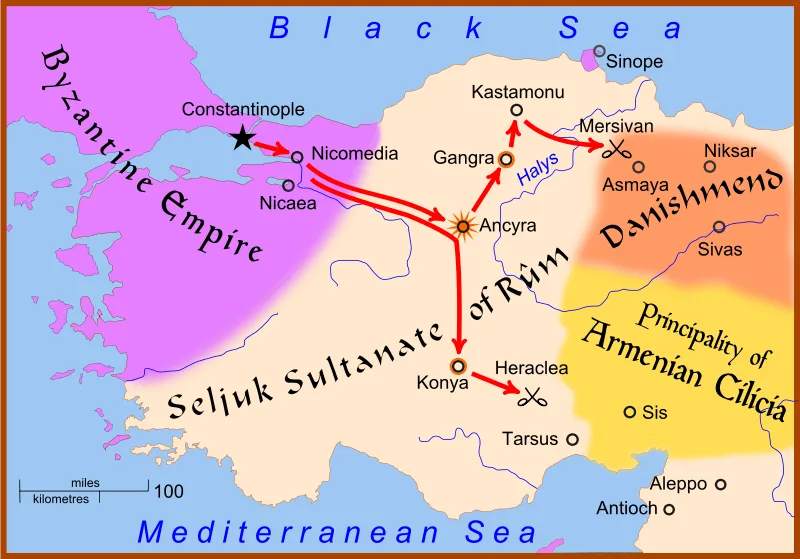Turkish Archaeologists Discover Grave of Sultan Who Defeated Crusaders
Kilij Arslan I was the second leader of the Seljuk Sultanate of Rūm
:focal(350x304:351x305)/https://tf-cmsv2-smithsonianmag-media.s3.amazonaws.com/filer/b6/73/b67316e0-67e6-4f8b-9cef-7aaa0f05e215/dfasdf.jpg)
Archaeologists from Dicle University have discovered the graves of Kilij Arslan I, the leader of the Seljuk Sultanate of Rūm who defeated some of the first Crusader armies to arrive in Turkey, and his daughter, in the Anatolian country’s Diyarbakir province.
As Daily Sabah reports, university scholars began searching for the graves through archival research. They then created a commission to oversee fieldwork. After researching graveyards across Diyarbakir’s Silvan district, where they knew the grave must be, the researchers focused their efforts on two gravesites in Orta Çeşme Park. The excavation work involved digging more than six feet underground across a 377-square-foot area. After nine days of work, the team successfully found the burials.
“The area on which we work featured the grave of the most important ruler of the Sultanate of Rum,” says commission member Aytaç Çoşkun. “Therefore, we studiously sustained our work day and night.”
Kilij Arslan I was the second sultan of the Seljuk Sultanate of Rūm. His father, Suleiman ibn Qutulmish, established the independent state in Anatolia by seceding from the Great Seljuk Empire in 1077.
Kilij Arslan became sultan in 1092. Three years later, Pope Urban II set the first wave of Crusaders from Western Europe into the Muslim-controlled Middle East. The People’s Crusade, led by charismatic preacher Peter the Hermit, arrived in Turkey in 1096. The sultan’s forces met the Crusaders in the Battle of Civetot on October 21, killing thousands and ending the Christian campaign.

“As soon as the Crusaders appeared at the entrance of the valley, they were rained with arrows, falling down their horses one by one before they could figure out what was going around,” wrote scholar Birsel Küçüksipahioğlu in a 2015 journal article. “The Crusaders were perplexed, running here and there. … [I]t was the first time that the Crusaders so closely witnessed the disciplined strategy and tactics of Turks.”
Aided by allies among the Turkish chieftains, Kilij Arslan later clashed with forces involved in the First Crusade and the Crusade of 1101. Per Daily Sabah, he went on to conquer much of eastern Anatolia, which was then ruled by the Danishmendid dynasty, before his death in 1107.
Per Encyclopedia Britannica, the Sultanate of Rūm was home to diverse groups of people, including Christians, Armenians, Greeks, Syrians and Iranian Muslims. Its leaders’ tolerance of different groups supported the sultanate’s stability, and it became a thriving region for commerce, agriculture and art. Eventually, however, the sultanate declined, and in the 1240s, the region came under control of the Mongols.
Craft experts are currently working to restore artifacts from the Alaeddin Mosque in Konya province, which holds the tombs of later leaders of the Sultanate of Rūm, according to the state-run Anadolu Agency. The mosque, constructed during the time of Mesud I, who ruled from 1116 to 1156, houses intricately decorated monuments honoring eight Anatolian Seljuk rulers.
Mehmet Karakoc, rector of Dicle University, tells the Anadolu Agency’s Hasan Namli that the discovery of the tombs is significant for the area’s history.
He says, “This will bring a different perspective to historical events in terms of both Silvan and Diyarbakir history.”
/https://tf-cmsv2-smithsonianmag-media.s3.amazonaws.com/accounts/headshot/Livia_lg_thumbnail.png)
/https://tf-cmsv2-smithsonianmag-media.s3.amazonaws.com/accounts/headshot/Livia_lg_thumbnail.png)